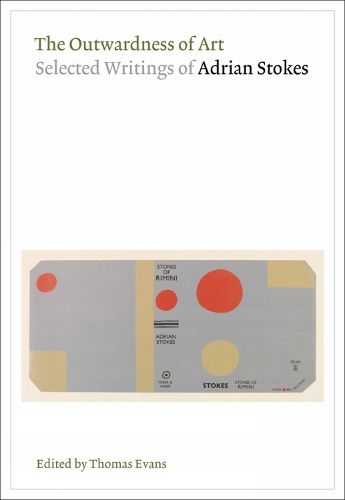Readings Newsletter
Become a Readings Member to make your shopping experience even easier.
Sign in or sign up for free!
You’re not far away from qualifying for FREE standard shipping within Australia
You’ve qualified for FREE standard shipping within Australia
The cart is loading…






Immensely influential, and long beloved by artists, writers and theorists alike, Adrian Stokes (1902 1972) was at once the last of the great British amateur art writers and
as the first art theorist to substantially synthesise aesthetics and psychoanalysis
among the first of the moderns. Since the publication of his groundbreaking books The Quattro Cento and Stones of Rimini in the 1930s, Stokes’s writing has enjoyed a readership across disciplines from psychoanalysis to literature and art. Contemporary admirers ranged from Ernst Gombrich to Dore Ashton, Ben Nicholson to Philip Guston, Ezra Pound to John Ashbery
reflecting the diverse milieus in which Stokes moved. And yet it has been nearly 45 years since a broad introduction to his work has been commercially available. In the wake of a recent biography, new critical studies and reprintings of individual books, this volume presents a substantial selection from Stokes’s published writings
including important posthumously published texts as well as his superb ballet writings of the 1920s
highlighting him as a pioneering thinker on art and a virtuoso of the essay form. AUTHOR: British-born artist Thomas Evans is the author of Furniture without Rest: Introduction to a Pedestrian Thought Theatre. He was previously the editor of poetry magazine Tolling Elves. SELLING POINTS: . Adrian Stokes (1902 1972) was one of the twentieth century’s great prose stylists and most nuanced aesthetic theorists . 2022 marks the 50th anniversary of Stokes’s death, and 50 years since the last selected writings was published (edited by Richard Wollheim). This book builds on it, offering entire chapters and essays rather than extracts and selections, introducing him to a new audience . Includes posthumously published material and a broad introduction to Stokes’s writing on art and ballet
$9.00 standard shipping within Australia
FREE standard shipping within Australia for orders over $100.00
Express & International shipping calculated at checkout
Immensely influential, and long beloved by artists, writers and theorists alike, Adrian Stokes (1902 1972) was at once the last of the great British amateur art writers and
as the first art theorist to substantially synthesise aesthetics and psychoanalysis
among the first of the moderns. Since the publication of his groundbreaking books The Quattro Cento and Stones of Rimini in the 1930s, Stokes’s writing has enjoyed a readership across disciplines from psychoanalysis to literature and art. Contemporary admirers ranged from Ernst Gombrich to Dore Ashton, Ben Nicholson to Philip Guston, Ezra Pound to John Ashbery
reflecting the diverse milieus in which Stokes moved. And yet it has been nearly 45 years since a broad introduction to his work has been commercially available. In the wake of a recent biography, new critical studies and reprintings of individual books, this volume presents a substantial selection from Stokes’s published writings
including important posthumously published texts as well as his superb ballet writings of the 1920s
highlighting him as a pioneering thinker on art and a virtuoso of the essay form. AUTHOR: British-born artist Thomas Evans is the author of Furniture without Rest: Introduction to a Pedestrian Thought Theatre. He was previously the editor of poetry magazine Tolling Elves. SELLING POINTS: . Adrian Stokes (1902 1972) was one of the twentieth century’s great prose stylists and most nuanced aesthetic theorists . 2022 marks the 50th anniversary of Stokes’s death, and 50 years since the last selected writings was published (edited by Richard Wollheim). This book builds on it, offering entire chapters and essays rather than extracts and selections, introducing him to a new audience . Includes posthumously published material and a broad introduction to Stokes’s writing on art and ballet